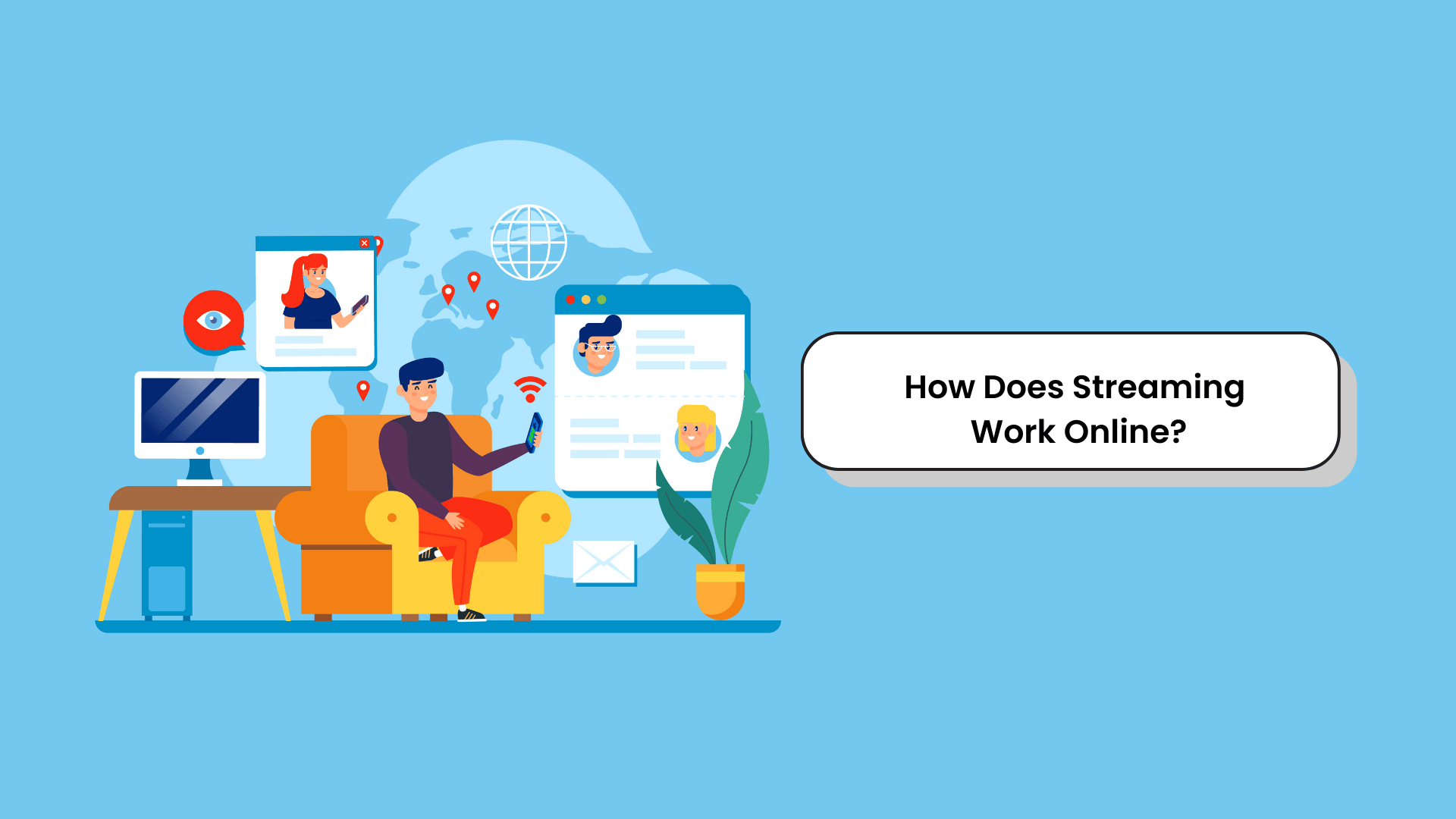Streaming has revolutionized how we watch, listen, and connect online. Whether binge-watching a series, attending a live event, or listening to music, streaming makes it possible without downloading files first. But how does it work?
Here’s a straightforward look at the technology behind streaming.
📡 What Is Streaming?
Streaming is the real-time delivery of audio or video content over the internet. Instead of downloading the entire file before playback, your device continuously receives and plays small pieces of data.
This allows you to:
- Watch live or on-demand videos instantly
- Listen to music without storage issues
- Participate in webinars, live broadcasts, or gaming streams with minimal delay
🧩 Key Components of Streaming
- Media Source
- This is where the content is stored—on a server or in the cloud. It could be a movie file, live camera feed, or music track.
- Streaming Server
- The server breaks the media into data packets and sends them sequentially to users. It ensures delivery is fast, stable, and adjusted based on internet speed.
- Codec & Compression
- Large media files are compressed using codecs like H.264 or AAC to reduce bandwidth usage while maintaining quality.
- Buffering
- A few seconds of content are preloaded (buffered) on your device to avoid interruptions due to minor internet fluctuations.
- Media Player
- The app or browser you use (like Netflix, YouTube, or Spotify) decodes the data and plays it in real time.
⚙️ Adaptive Bitrate Streaming
Most modern platforms use adaptive bitrate streaming. This means the quality of the stream automatically adjusts based on your internet speed. If your connection drops, the video may shift to a lower resolution to prevent buffering.
🚀 What Affects Streaming Quality?
- Internet speed: Higher speeds allow for smoother, high-resolution streams
- Device performance: Older devices may struggle with HD or 4K content
- Server location: The farther the server, the longer data takes to reach you
- Network congestion: Too many devices using the same Wi-Fi can cause lag
🌐 Types of Streaming
- On-demand streaming: Watching pre-recorded content (Netflix, YouTube)
- Live streaming: Real-time broadcasts (Twitch, live sports, webinars)
- Audio streaming: Music and podcasts (Spotify, Apple Music)
- Game streaming: Playing video games remotely via the cloud (Xbox Cloud Gaming, NVIDIA GeForce Now)
Final Thoughts
Streaming works by delivering content in a continuous flow, allowing instant playback without full downloads. Behind the scenes, it’s a blend of data compression, networking, and adaptive tech—all working together to give you seamless entertainment at your fingertips.

